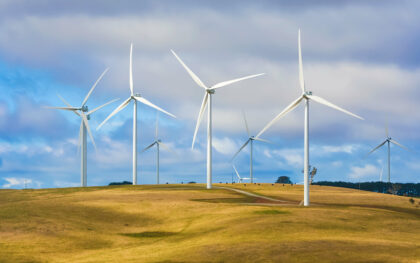Design of energy plants

Overall Course Objectives
Energy plants designed to accommodate a future fossil fuel-free society and build on sustainable energy technologies are key elements of our future society. The course objectives are to:
• enable students to apply thermodynamics, combustion theory and heat transfer on practical problems related to the design of energy plants.
• enable students to set up the required fundamental equations in an iterative equations solver (here EES) in order to analyze the interaction of individual components in an energy plant.
Learning Objectives
- Formulate mass and energy balances describing a simple thermal energy system using the equation solving software EES.
- Balance reaction equations of combustion and determine flue gas loss based on higher and lower heating values.
- Dimension heat exchangers by use of LMTD and epsilon-NTU methods.
- Determine the convective heat transfer coefficient of internal and external flows, and calculate the overall heat transfer coefficient of heat exchangers.
- Analyze energy plants to determine optimum operating conditions with regard to energy consumption and economy.
- Select commercial components for a thermal energy plant with a focus on costs and energy consumption
- Formulate a project description and problem statement on an energy plant designproject.
- Design and simulate simple energy plants in EES.
- Document projects on an energy plant in a technical report.
Course Content
Thermodymics, combustion theory and heat transmission, comprising
• Modelling of thermal energy systems based on mass and energy balances
• Reaction equations of combustion, heating values, flue gas loss and adiabatic flame
temperature.
• Fuel characteristics, flame types and harmful emissions.
• Gas mixtures, partial pressure and partial volume.
• Moist air.
• Heat exchangers and heat transfer coefficients.
Design of energy plants, comprising
• Planning, concepts.
• Choosing components.
• Economy.
• Control.
The iterative equation solver EES will be used as calculation tool during the course.
Three individual mini projects within theory of thermodynamics, combustion and heat transfer are carried out during the 13 week period. Each mini project will be documented in a short report, which is part of the evaluation of the course.
A group project on an energy plant of own choice is carried out during the 3 week period. Examples are: air conditioning system, solar heating system, combined heat and power plant and central heating system. The students are encouraged to carry out relevant tests on a test facility, which build by the students and which relates to the project. The project should be documented in a technical report, which is part of the evaluation of the course.
Recommended prerequisites
62604/41401/41045, Basic thermodynamics equivalent to course 62604
Teaching Method
A mixture of lectures, problem solving and project work during the 13-weeks period. Project work in the 3-weeks period.




